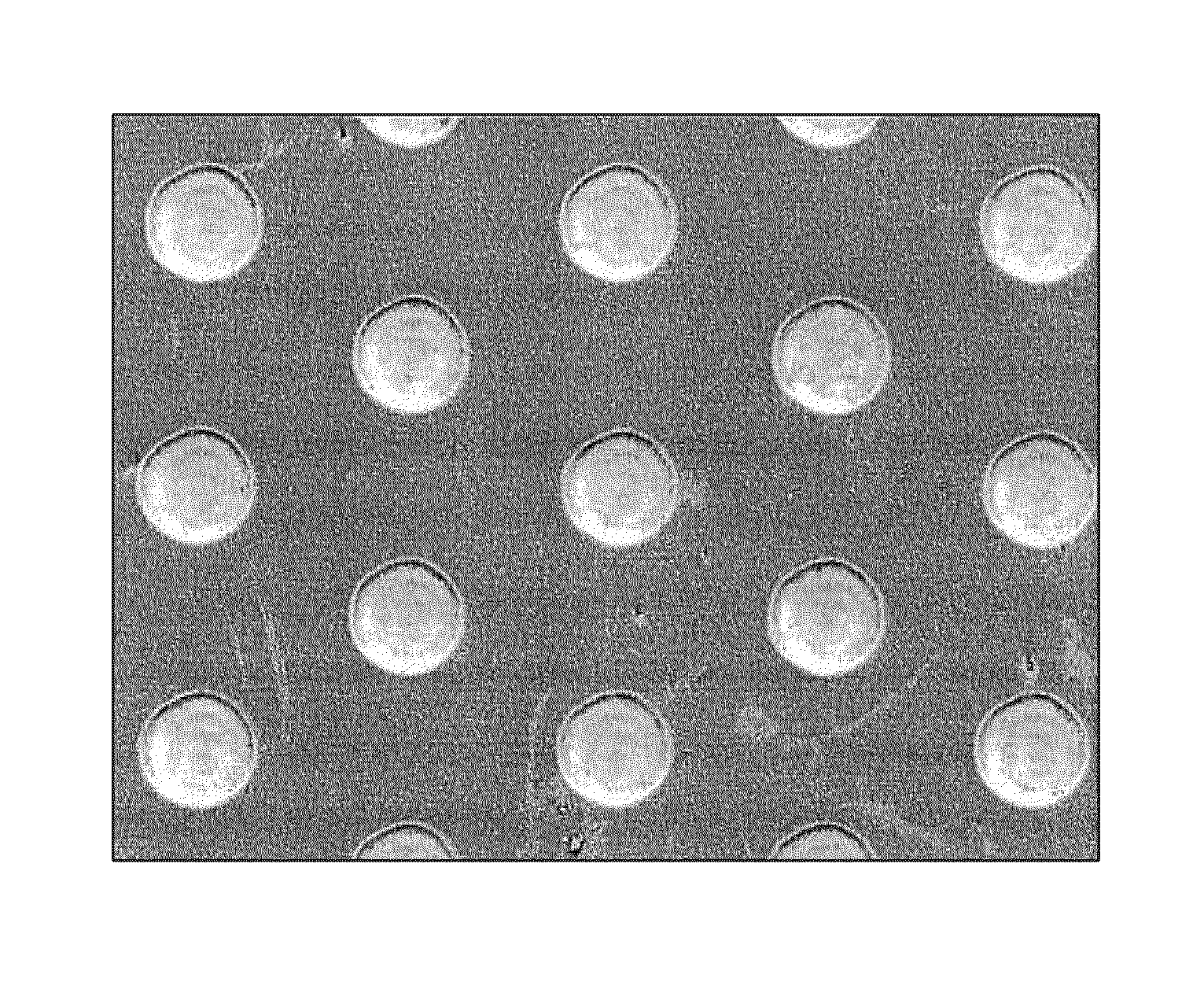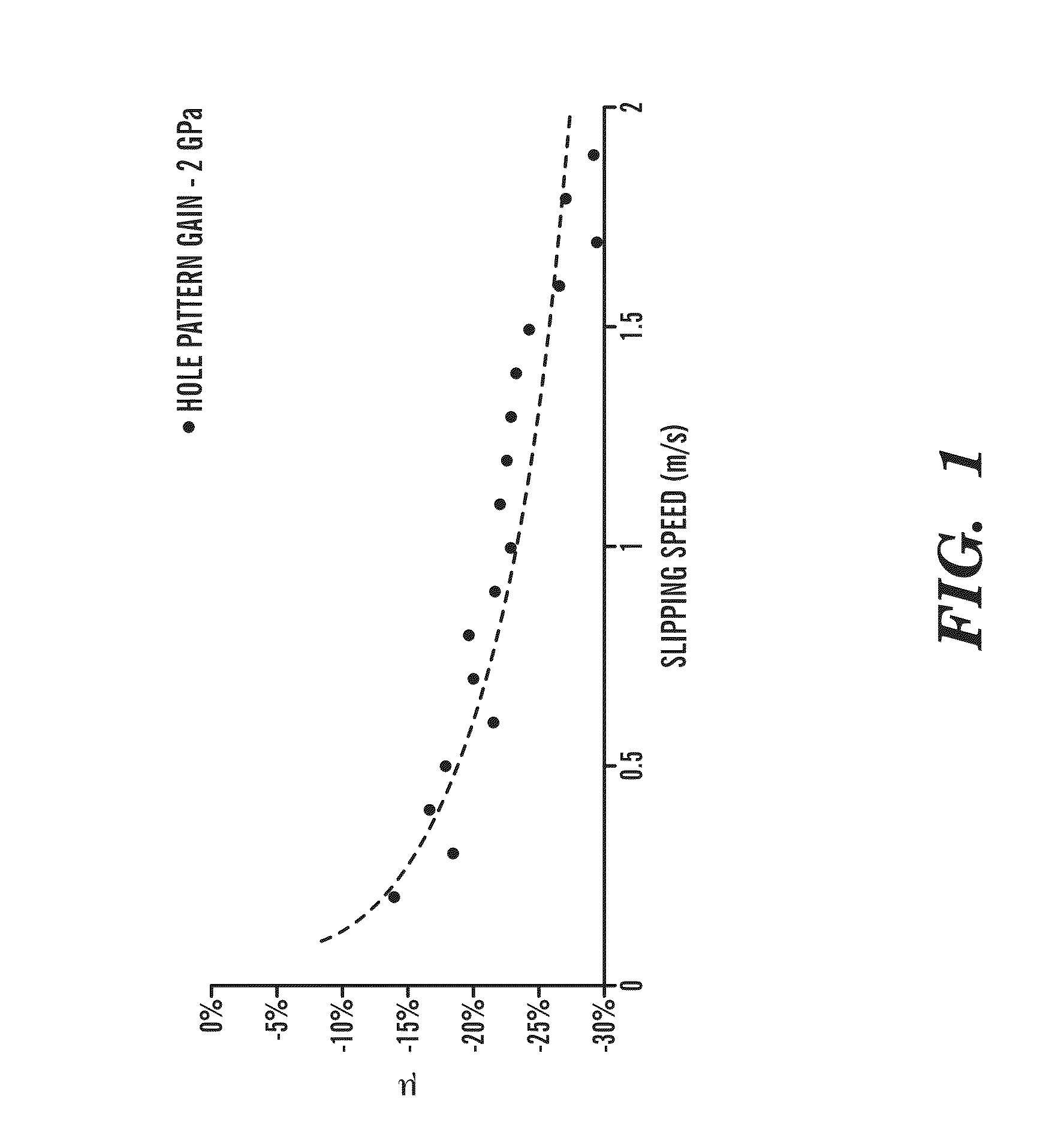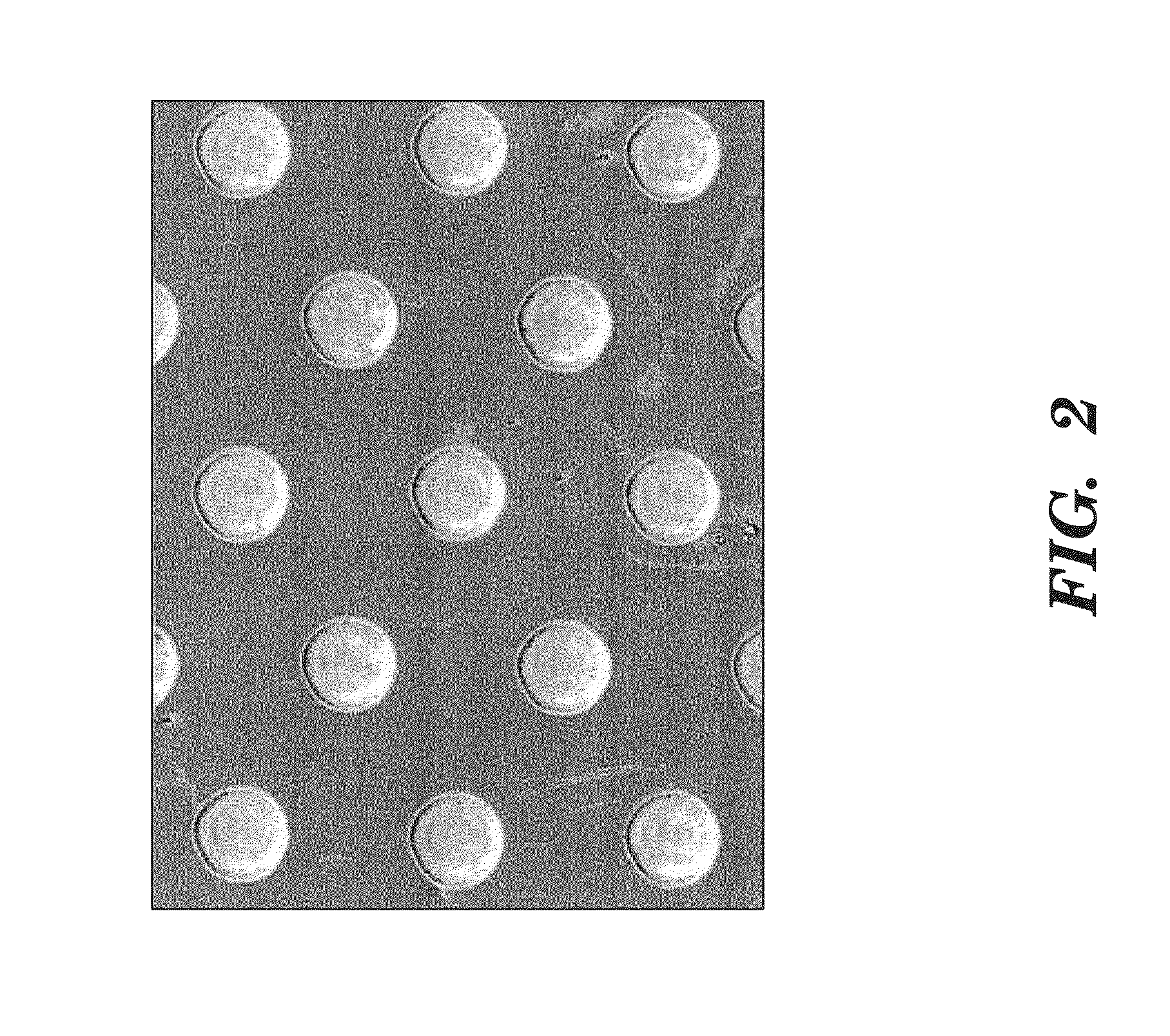Friction piece in a lubricated medium, working at contact pressures higher than 200 MPa
a friction piece and lubricating medium technology, applied in the field of friction pieces in lubricated medium, can solve the problems of oil film pressure drop, surface damage, and possible embrittlement of layers and flaking,
- Summary
- Abstract
- Description
- Claims
- Application Information
AI Technical Summary
Benefits of technology
Problems solved by technology
Method used
Image
Examples
Embodiment Construction
[0031]Reference can be made to example No. 1 of the treatment below:
[0032]The parts treated are rollers with a spherical bearing surface 50 mm in diameter, made from tribofinished X85WCrMoV6-5-4-2 steel. These parts have been coated with a 2 μm thick DLC deposit, in which holes (circular microcavities) have been prepared by femtosecond laser pulses. The surfaces are textured by a network of holes 79 μm in diameter and 400 nm deep, with a spacing of 125 μm, as shown in FIG. 2. The network consists of a succession of rows of 7 and 8 offset holes, on a 1 mm wide strip placed at the centre of the roller friction track.
[0033]These rollers are used for friction tests on a “Amsler” machine (reference tribological test for a person skilled in the art), under high contact pressures (1 to 3.2 GPa maximum contact pressure), sliding speeds from 0.2 to 2 m / s, and low lubricant entrainment speeds in the contact (10% of the sliding speed). Each textured part has been tested opposite an uncoated an...
PUM
| Property | Measurement | Unit |
|---|---|---|
| thickness | aaaaa | aaaaa |
| length | aaaaa | aaaaa |
| length | aaaaa | aaaaa |
Abstract
Description
Claims
Application Information
 Login to View More
Login to View More - R&D
- Intellectual Property
- Life Sciences
- Materials
- Tech Scout
- Unparalleled Data Quality
- Higher Quality Content
- 60% Fewer Hallucinations
Browse by: Latest US Patents, China's latest patents, Technical Efficacy Thesaurus, Application Domain, Technology Topic, Popular Technical Reports.
© 2025 PatSnap. All rights reserved.Legal|Privacy policy|Modern Slavery Act Transparency Statement|Sitemap|About US| Contact US: help@patsnap.com



